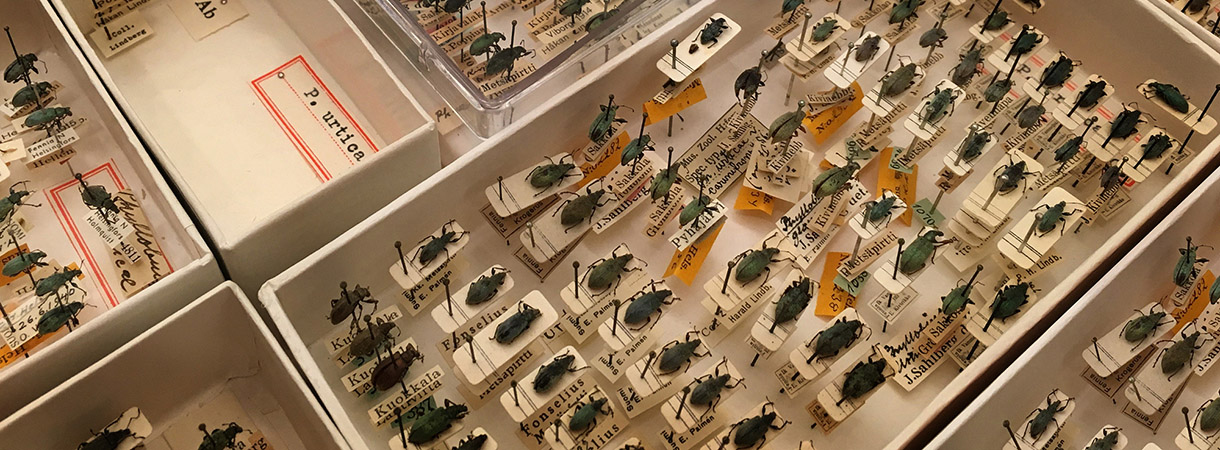Collections and databases
Luomus is responsible for preserving, accruing and maintaining Finland’s national collections in natural history. The Luomus collections comprise more than 13 million animal, plant, fungal, rock and fossil specimens. The collections and databases are used by researchers around the world.
The Luomus collections have been accumulated over more than 300 years, and now in the era of climate change and mass extinctions they are more important than ever. In the age of digitalisation, every specimen must be photographed and its information transferred to a database. New technologies enable entirely new forms of research. They can offer climate change and mass extinction researchers a direct view of the numbers and habitats of various species over the course of centuries.
ALL ORGANISM GROUPS REPRESENTED IN THE COLLECTIONS
The collections of Luomus cover more than half of all natural science collections in Finland. They encompass the whole globe, even though they are focused on Finland and the other cooler areas of the north. The collections are an invaluable resource for both Finnish and international researchers. The biological collections cover all classes of organisms. The mycological, bryological and entomological collections are the most significant. Among the geological collections, the most important are the meteorite and Antarctica collections, while the Baltic fossils and the von Nordmann cave bear collection are the most important to palaeontology.
LONG TIME SERIES
The databases include observations of various species as well as museum collection datasets. The internationally unique, decades-long time series of bird observations and the bird ringing register as well as the distribution database of Finnish vascular plants are the most important observation data.
